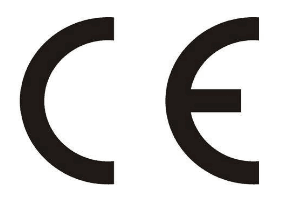What is the difference between CE certification test standards EN55035 and EN55020, EN55024
With the development of science and technology, the application of products is becoming more and more extensive. Nowadays, many products have more and more functions, and the scope of coverage is becoming wider and wider. For example, the products may involve or include: information technology equipment ( ITE equipment) ), Audio and video equipment, broadcast receiving equipment, entertainment light control equipment or a combination of the above equipment. When doing CE certification, the corresponding test standards also need to be updated. New products will require new test standards to apply them.
Then, if your product is: a multi-functional information technology product, or a multimedia audio video product, sold to various regions or countries of the European Union, when doing CE certification, the corresponding EMC (electromagnetic compatibility) test standard, The latest emission and immunity standards EN55032 and EN55035 must be used , and the four standards EN55022 , EN55024 , EN55013 , and EN55020 can no longer be used .
Meanwhile, EN55035: 2017 in 2017 Nian 5 Yue 29 instead of the original date of ITE equipment and multimedia equipment for the class EN55020 , EN55024 and amendments pieces. The latest standards EN55032 and EN55035 have also been added to the Official Journal of the European Union ( OJ ). The EMC Directive 2014/30 / EC has already included the new standards EN55032 and EN55035 .
So, let's take a look at the difference between the new standard EN 55035 and the old standard?
![]()
EN55035 applicable product range
This standard applies to multimedia equipment with AC or DC rated voltage not exceeding 600V , and multimedia equipment is information technology equipment, audio equipment, video equipment, broadcast receiving equipment, entertainment light control equipment or a combination of the above equipment.
Equipment within the scope of EN 55020 and EN 55024 is within the scope of this standard.
Multimedia equipment ( MME ) for professional use is also within the scope of this standard.
EN55035 key test requirements - comparison method
EN 55035 test requirements are not in accordance with EN 55020 and EN 55024 simple superposition of test requirements, here we come to the testing requirements and new standards by comparing the difference in key test project, a clearer understanding EN 55035 test standard.
1. Test items with the same test requirements as EN 55020 and EN 55024
ESD ( Electrostatic Discharge Immunity )
EN 55035 test requirements: +/- 4KV for Contact discharge ; +/- 8KV for Air discharge
EN 55020 test requirements: +/- 4KV for Contact discharge ; +/- 8KV for Air discharge
EN 55024 test requirements: +/- 4KV for Contact discharge ; +/- 8KV for Air discharge
2. Test items with different test requirements from EN 55020 and EN 55024
1. RS ( radiation immunity)
Test requirements of EN 55035 : 800MHz-1000MHz, 1800MHz, 2600MHz, 3500MHz, 5000MHz
Test requirements of EN 55020 : 900MHz, 790MHz-862MHz
Test requirements of EN 55024 : 80MHz-1000MHz
2. EFT ( Fast Pulse Group)
Test requirements of EN 55035 : +/- 1KV for AC mains port ; +/- 0.5KV for analogue digital data ports and DC network power port
Test requirements for EN 55020 : Only +/- 1KV for AC mains port
The test requirements of EN 55024 : +/- 1KV for AC mains port ; +/- 0.5KV for analogue digital data ports and DC network power port
3. Surge ( surge)
The test requirements of EN 55035 : unshielded symmetrical port 1KV for without primary protection in place ; 4KV for the primary protectors fitted ; 0.5KV for coaxial or shielded signal port
DC network power port : 0.5KV
AC mains power port : 1KV for line to line, 2KV for line to earth
Test requirements of EN 55020 : N / A
EN 55024 test requirements: Signal ports and telecommunication ports: 1KV for without primary protectors fitted
DC power port: 05KV; AV Mains power port: 1KV for line to line, 2KV for line to earth
4. CS ( Conducted Immunity)
Test requirements of EN 55035 : 0.15MHz-10MHz: 3V; 10MHz-30MHz: 3Vto 1V, 30MHz-80MHz: 1V
Test requirements of EN 55020 : N / A
Test requirements of EN 55024 : 0.15MHz-10MHz: 3V
5. Power frequency Magnetic field ( power frequency magnetic field immunity)
Test requirements of EN 55035 : 1A / m
Test requirements of EN 55020 : N / A
Test requirements of EN 55024 : 1A / m
6. Voltage Dips & short interruptions -Voltage dips
Test requirements of EN 55035 : Residual voltages <5% Number of cycles 0.5; Residual voltage: 70% Number of cycles: 25 for 50Hz, 30 for 60Hz
Test requirements of EN 55020 : N / A
Test requirements of EN 55024 : Residual voltages <5% Number of cycles 0.5; Residual voltage: 70% Number of cycles: 25 for 50Hz, 30 for 60Hz
7. Voltage Dips & short interruptions -Voltage interruptions
Test requirements of EN 55035 : Residual voltages <5% Number of cycles: 250 for 50Hz, 300 for 60Hz
Test requirements of EN 55020 : N / A
Test requirements of EN 55024 : Residual voltages <5% Number of cycles: 250 for 50Hz, 300 for 60Hz

3. New test items in EN 55035
1. Broadband impulse noise disturbances, repetitive ( repeated noise bandwidth pulses ) - Impulse Frequency Test level
Test requirements: 0.15MHz to 0.5MHz 107dBuV; 0.5MHz to 10MHz 107dBuV to 36dBuV; 10 to 30MHz 36dBuV to 30dBuV
2. Broadband impulse noise disturbances, isolated ( isolated bandwidth impulse noise disturbance )-Impulse Frequency Test level
Test requirements: 0.15MHz to 30MHz 110dBuV
This article mainly introduces: What is the difference between EN55035 and EN55020, EN55024
For more CE certification information, please contact our professional customer service




